Seattle’s skyline is now filled with sleek modern towers, but among them stands one building that tells the story of the city’s early 20th-century ambition: Smith Tower. Completed in 1914, this iconic 42-story skyscraper was once the tallest building in the city and the Pacific Northwest. Not only does it boast an impressive architectural legacy, but its history also reflects Seattle’s industrial growth, the influence of the lumber industry, and even the inventor of the typewriter.
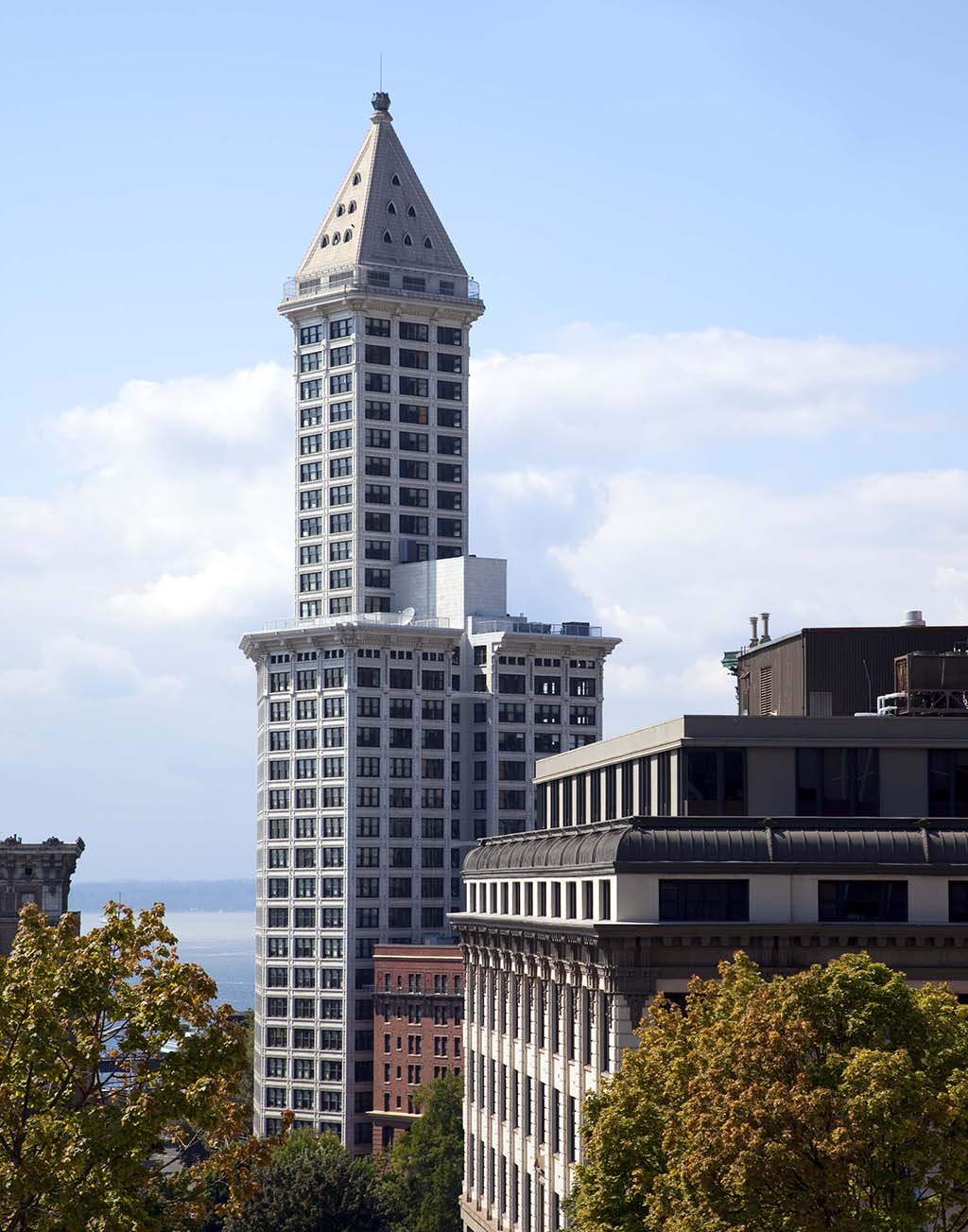
Smith Tower, Seattle, 2009
Photo by Carol M. Highsmith, Courtesy Library of Congress (2010630666)
The Birth of Smith Tower
In the early 1900s, Seattle was experiencing rapid growth. The Klondike Gold Rush had brought people and wealth to the city, and there was a push to modernize the skyline. Among the key figures behind this movement was Lyman Smith, a Seattle businessman and real estate developer who made his fortune in the lumber industry. Smith envisioned a towering skyscraper that would become a symbol of the city’s prosperity.
Construction began on Smith Tower in 1910, with completion in 1914, and it quickly became the tallest building in Seattle at 502 feet. Designed by architect William J. Bain, the building was a pioneering example of modern skyscraper construction. But what’s interesting is that Lyman Smith, while a prominent real estate mogul, faced significant opposition from the very industry that helped him build his fortune: the lumber industry.
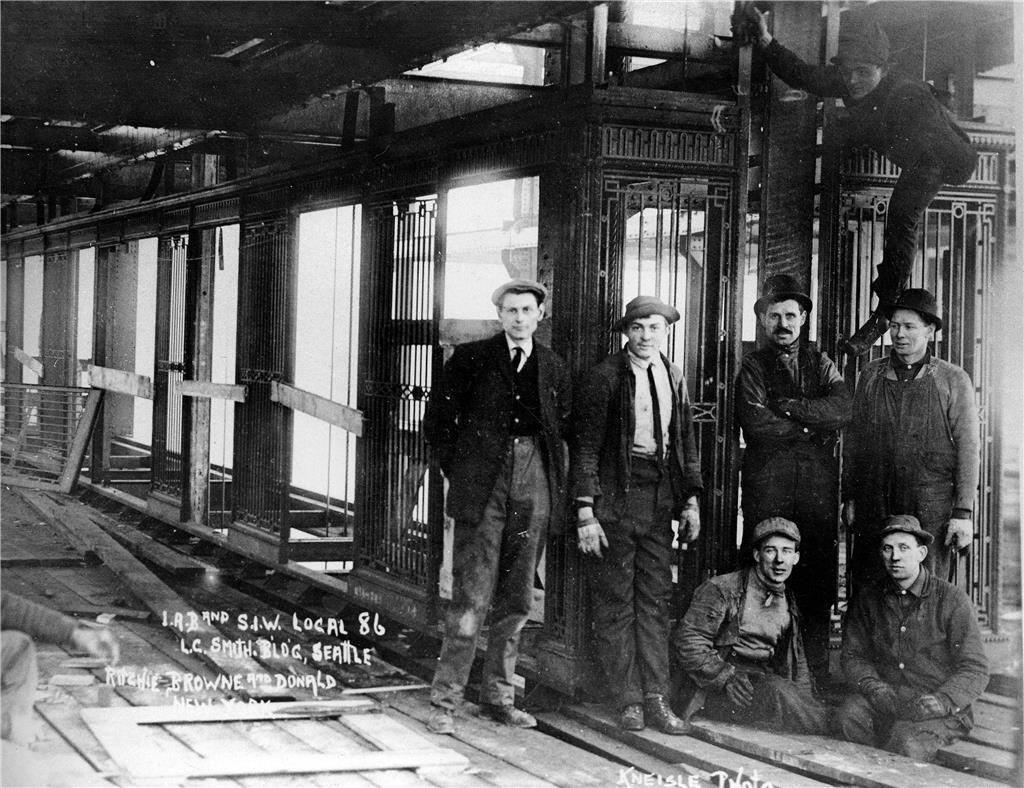
Construction workers, unfinished L.C. Smith Building (Smith Tower) interior, Seattle, ca. 1913
Photo by Joseph J. Kneisle, Courtesy UW Special Collections (SEA1029)
The Conflict with the Lumber Industry
While Lyman Smith was deeply involved in the lumber industry, his ambitions for Smith Tower created tension with his peers in that sector. In the early 20th century, the lumber industry in Seattle was dominated by large timber companies, which held significant sway over the city’s economy and architecture.
Smith’s decision to build a steel and concrete skyscraper, as opposed to a wooden building, was a direct challenge to the lumber industry, which relied heavily on timber for construction materials. Many of the city’s prominent lumber executives believed that wood, particularly timber from the Pacific Northwest, should remain the building material of choice for Seattle’s development.
Smith’s groundbreaking vision for Smith Tower marked a shift away from wood and ushered in a new era of construction with steel frames and concrete. This was an especially controversial move because the lumber industry was not just an economic powerhouse; it was also a symbol of Seattle’s identity. The conflict highlighted the growing tensions between traditional industries and new technological innovations in the city.
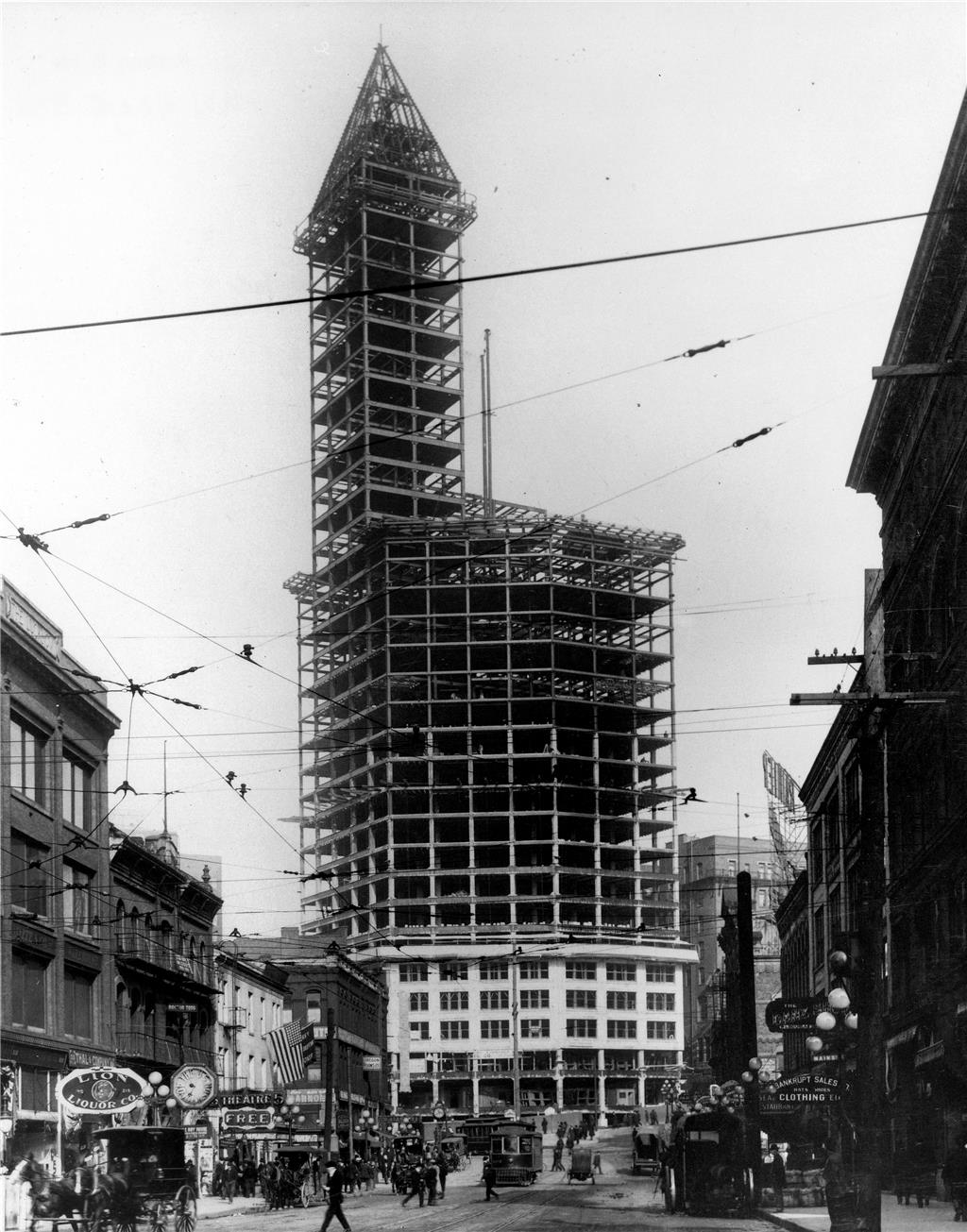
L.C. Smith Building (Smith Tower) under construction, Seattle. ca. 1913
A Structure Like No Other
Despite the pushback from the lumber industry, Smith Tower was constructed with steel and concrete, materials that were still cutting-edge in the early 20th century. The decision to avoid wood in the construction wasn’t just about defying the lumber industry—it was also a matter of safety. Steel and concrete offered greater fire resistance, and Lyman Smith was determined to build a structure that would stand the test of time.
The Beaux-Arts design of Smith Tower, with its intricate limestone facades and granite details, made it a striking landmark. But its most iconic feature was the beacon tower at the top, visible from miles around. This beacon wasn’t just decorative; it served as a functional guide for ships navigating Elliott Bay.
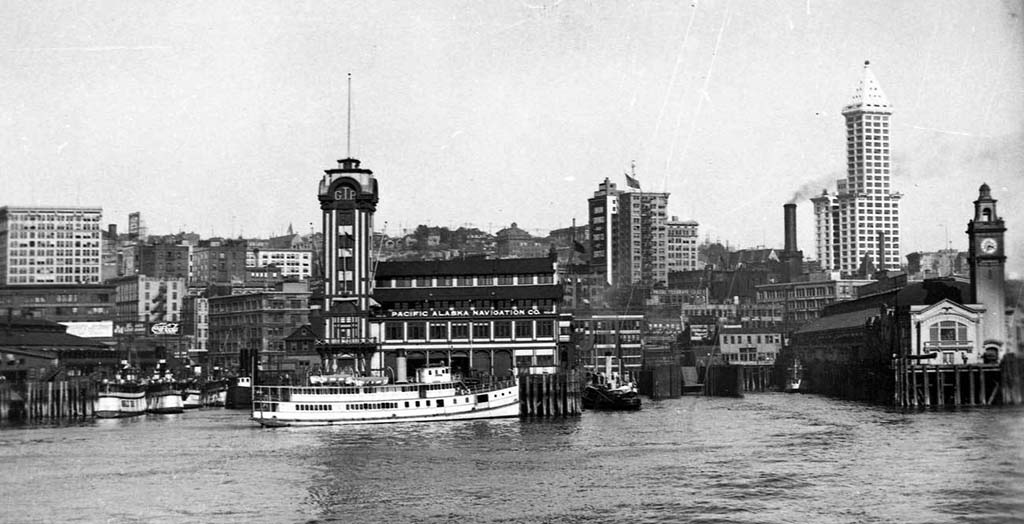
Smith Tower (right) in Seattle skyline, Elliott Bay, 1920s
Postcard
The Inventor of the Typewriter and Smith Tower
While the lumber industry was battling over the materials, the story of Smith Tower’s creation also has an interesting connection to Christopher Latham Sholes, the inventor of the typewriter. Sholes was not only famous for his invention of the modern typewriter but also an early investor in Smith Tower. Sholes’ involvement in the project added another layer of historical significance to the building, linking it to one of the most important innovations of the time.
Sholes, who had already revolutionized the way people communicated, saw the potential of investing in Seattle’s future. His backing, combined with Smith’s vision, gave Smith Tower the financial support it needed to rise to prominence.

Frye Hotel (left), Morrison Hotel and Smith Tower, original entry to the County-City Building (right), and City Hall Park (bottom), Seattle
Postcard
Fun Facts About Smith Tower
- Seattle’s First Skyscraper: When completed, Smith Tower was the tallest building on the West Coast, standing at 502 feet.
- No Wood in the Construction: In a bold move that angered local lumber moguls, Smith Tower was built entirely of steel and concrete, with no wood in its structure.
- The Beacon Tower: The iconic beacon on top of Smith Tower wasn’t just for decoration; it helped guide ships entering Elliott Bay into port safely.
- Art Deco Elegance: Inside, the building’s Art Deco features include brass elevators, marble floors, and ornate woodwork—all designed to reflect the building’s elegance and modernity.
- The Elevator Men: Originally, Smith Tower’s elevators were operated by attendants, or “elevator men,” a unique feature for skyscrapers at the time.
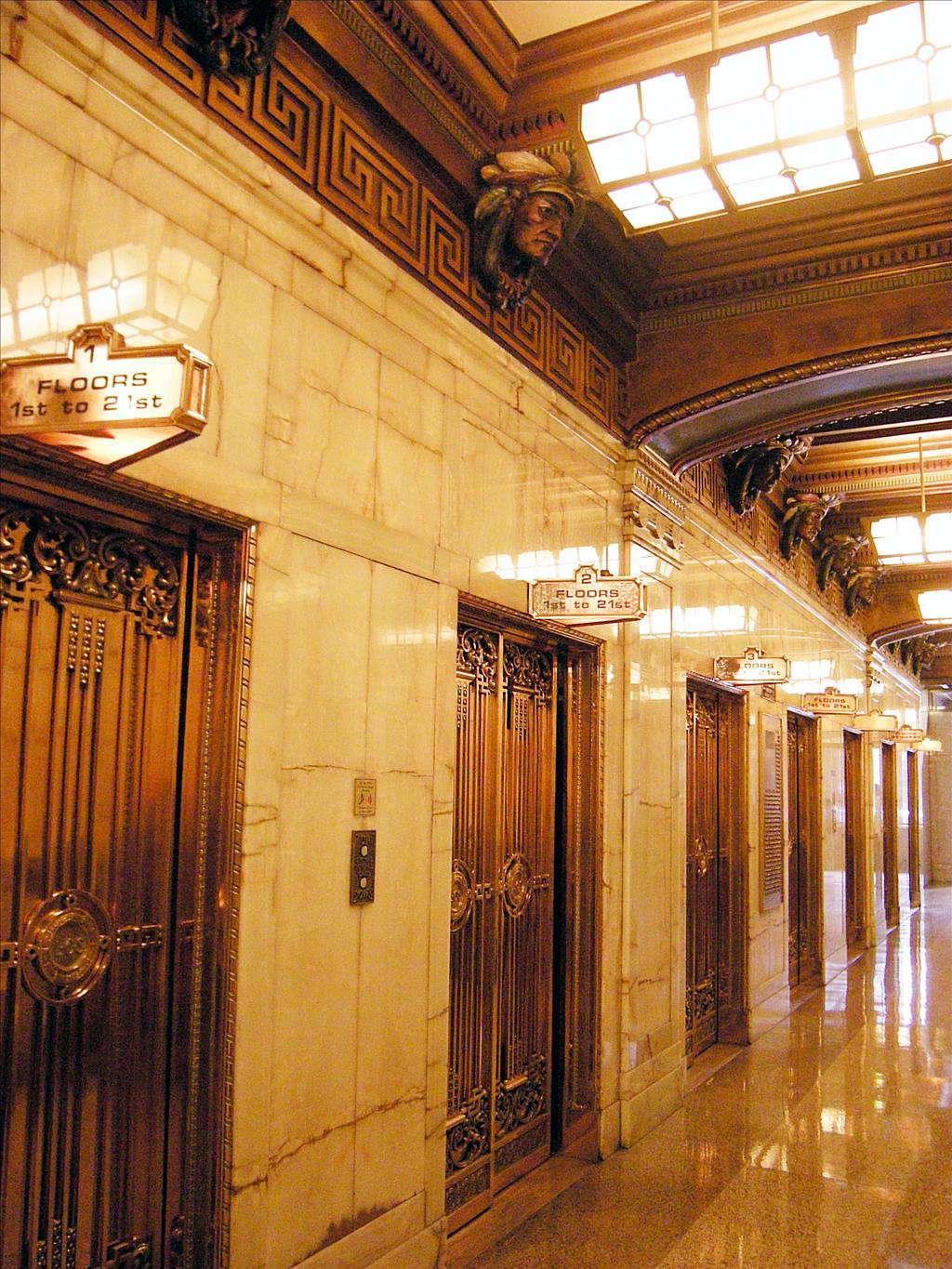
Lobby, Smith Tower, Seattle, October 9, 2008
Photo by Joe Mabel (CC BY-SA 3.0)
Smith Tower and Seattle’s Evolving Skyline
By the 1950s, new skyscrapers began to overshadow Smith Tower, but its role as Seattle’s first skyscraper was never forgotten. Over the years, the building was renovated and restored, with efforts beginning in the 1980s to protect its historic significance. In 1983, it was officially designated a Seattle Landmark, ensuring that it would be preserved for future generations.
Today’s Smith Tower
Today, Smith Tower stands proudly in Pioneer Square, offering office spaces, residential units, and an observation deck with stunning views of the city and the surrounding landscape. While it’s no longer the tallest building in Seattle, it remains a vital part of the city’s heritage and is a favorite destination for those interested in Seattle’s rich history.
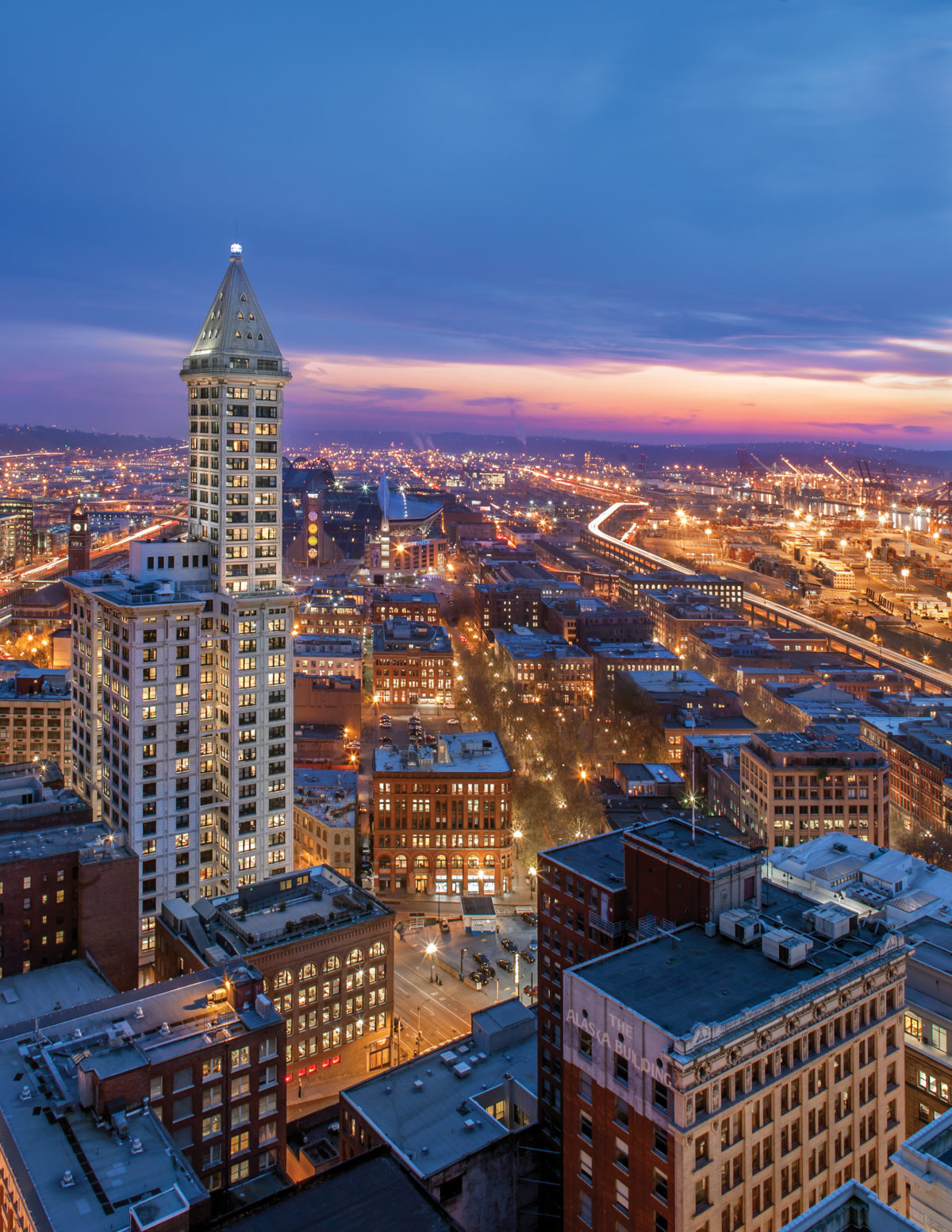
Image Source: Unicoprop.com
Smith Tower is more than just a building; it’s a symbol of Seattle’s growth, resilience, and ambition. From Lyman Smith’s pioneering vision to the conflict with the lumber industry, the tower’s creation was as much about innovation as it was about overcoming challenges.
As you walk through Pioneer Square, take a moment to appreciate Smith Tower for more than just its architecture. It’s a reminder of a time when Seattle was on the cusp of becoming the dynamic, modern city it is today—a city that’s still shaped by its past and the bold decisions of people like Lyman Smith.